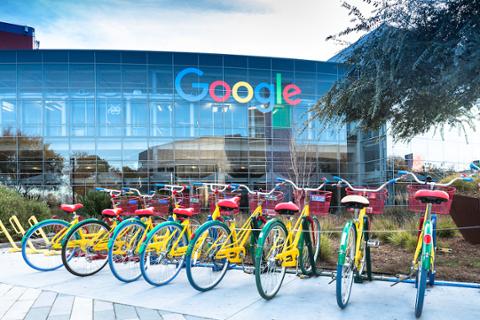Google plans to gradually reopen its offices in June, according to an internal memo by Google (and Google's parent firm, Alphabet) CEO Sundar Pichai (hat tip to CNBC for spotting it first). How the company executes that reopening could greatly influence the post-pandemic plans of other firms.
Describing the planned reopening as “slow, deliberate and incremental,” Pichai wrote that only 10 percent to 15 percent of workers would come back to the office at first. Those employees will generally have jobs that benefit from an in-office presence. Other workers, meanwhile, may work from home “potentially through the end of the year, although there will be moments or occasions where you are able to come into the office.”
Like many other tech firms, Google declared fairly early in the COVID-19 pandemic that its employees should work from home; it also took the precautionary step of canceling its summer conference, I/O, more than two months in advance. In addition to assisting its full-time employees through the remote-work transition, the company established a fund that enabled its temporary staff and vendors to take paid sick leave if they possibly became infected with COVID-19.
Although Google has seen usage of its services spike during the pandemic, its ad revenue has fallen, impacting its short-term plans. Last month, Google announced that it would slow hiring through the rest of 2020 in response to the COVID-19 pandemic. “By dialing back our plans in other areas, we can ensure Google emerges from this year at a more appropriate size and scale than we would otherwise. That means we need to carefully prioritize hiring employees who will address our greatest user and business needs,” Pichai wrote in an email to employees that was obtained by Bloomberg.
If Google’s gradual re-opening is a success, other companies may follow a similar template to bring employees back to the office.
COVID-19 and Burnout
In his email about re-opening, Pichai also discussed a plan to address employee stress related to the pandemic and remote work. “I know many of us have been running hard non-stop for weeks now and may be experiencing some burnout,” he wrote. “So, I also used TGIF as a chance to announce an official day off on May 22.” (TGIF is Google’s internal all-hands meeting.)
As the COVID-19 crisis drags on, more and more technologists are reporting significant burnout. For example, a recent survey by Blind, which anonymously polls technologists about their experiences, found that 73 percent of respondents were reporting burnout at the end of April, far above the 61 percent who felt burned out in mid-February. Some 20.5 percent said an unmanageable workload was at the root of their burnout, followed by 19 percent who said it was due to fears over job security.
Fixing burnout can take time (far more than a single “official” day off) and conscious effort, but it’s definitely doable. Here are some steps that technologists can follow to readjust:
- Establish a regular sleep schedule.
- Take a vacation (longer than a day).
- Exercise can curb stress.
- Establish a set schedule for checking email and work messages.
- Find a “stress buddy” who can listen to your concerns.
- Set boundaries on your workday.
While it’s difficult right now for many technologists to find the equilibrium they need, doing so is essential to minimizing stress as much as possible during an insanely stressful time.
Visit our COVID-19 Resource Center, which aims to provide the tech community with the best, most up-to-date information on the novel coronavirus.



